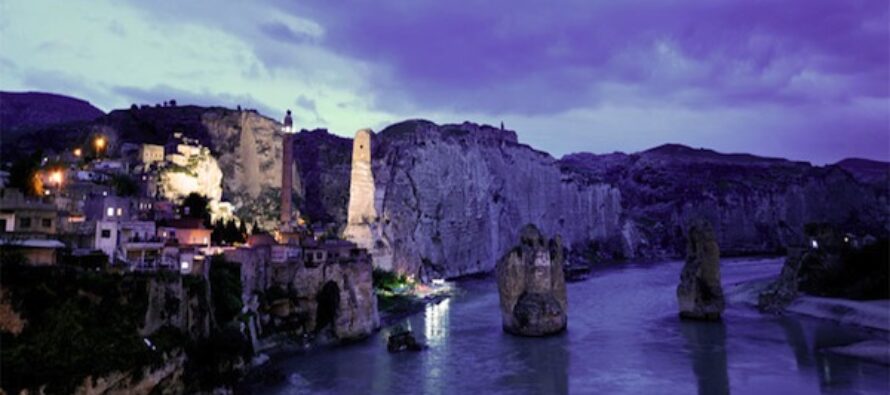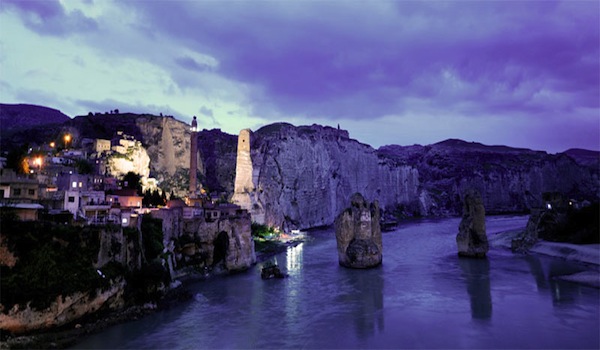Works started in Hasankeyf, millenary city of Kurdistan

![]()

In Hasankeyf/Batman, DSI (State Hydraulic Works ) and TOKI (Housing Development Administration) have set up a building area in a region where important findings belonging to Neolithic Age have been recovered.
Construction works have started in the interaction environment of protected area of Hasankeyf ancient city. A site which was declared as First Degree protected area in 1978.
While the construction works is damaging Hasankeyf and is carried out despite the city protection degree, a number of historical artifacts around were abandoned and will be destroyed.
Initiative For Survival of Hasankeyf reacted to the works in the area which, the Initiative claims, were started without the relevant permission been given by Diyarbak?r Culture and Natural Properties Conservation Regional Directorate.
In a release, initiative speakers stated that “Civil authorities, trade unions, civil society organizations and people would have to prepare a reconstruction plan for the protection of the area, but they didn’t.”
Speakers also pointed out that the decision for construction works were taken without paying any attention to Hasankeyf municipality and people. The spokesperson stated that they will file a criminal complaint against institutions and people that permitted the construction works to go ahead if these are not stopped immediately.
The Ilisu dam site will be situated on the Tigris river, just 65km upstream from the Syrian and Iraqi border. It is currently the largest planned hydropower project in Turkey.
The Ilisu is planned as a rock-fill dam, 1820m long and 135m high. Its reservoir would cover a surface area of 313 square kilometres and contain up to 10.4 billion cubic metres of water. The Ilisu power station will have a capacity of 1,200 MW, and is expected to produce 3,800 GWh of power per year. The Ilisu dam is expected to cost $1.52 billion – though that does not include financing costs, which could boost the price up to $2 billion or more. Building of the dam is due to start in 2000 and finish in 7 – 8 years.
Related Articles
Blast strikes Japanese plant, core safe; 2,000 bodies found on coast
![]()
REUTERS/AP FUKUSHIMA The Fukushima no. 1 power plant of Tokyo Electric Power Co. at Ckuma A second hydrogen explosion rocked
Oil spill NZ’s ‘worst maritime disaster’
![]()
Oil leaking into sea has increased, with government calling it New Zealand’s worst ever environmental disaster The ship’s owners said
Fukushima radiation seen in tuna off California
![]()
(Photo: EPAREUTERS, WASHINGTON Low levels of nuclear radiation from the tsunami-damaged Fukushima power plant have turned up in bluefin tuna


